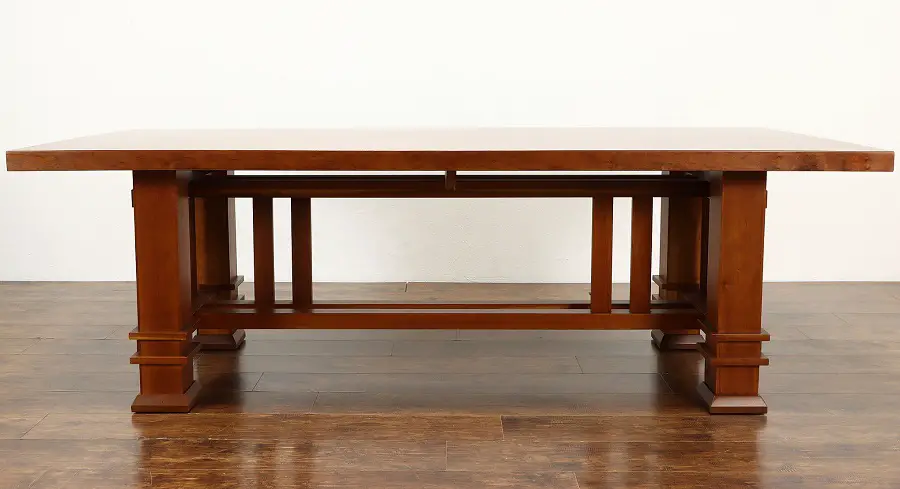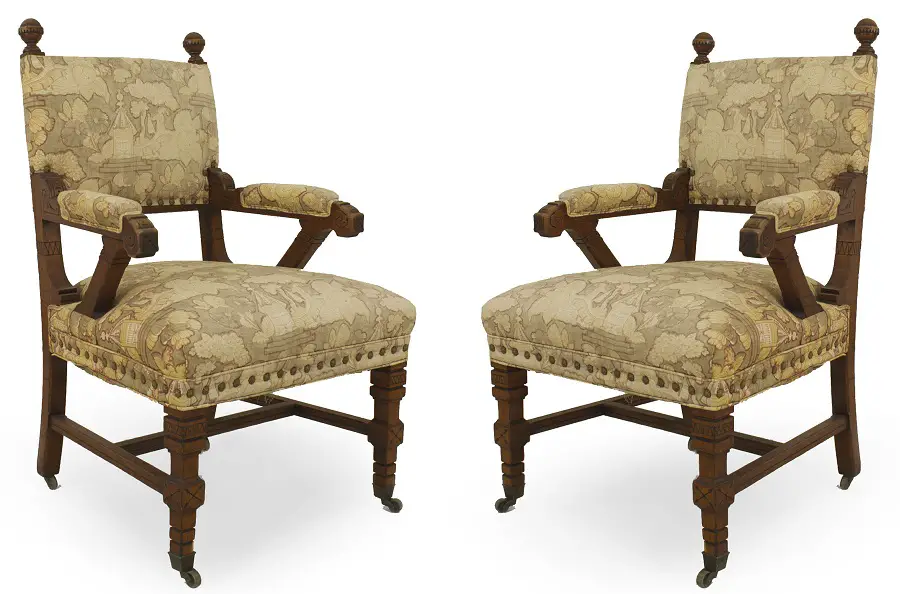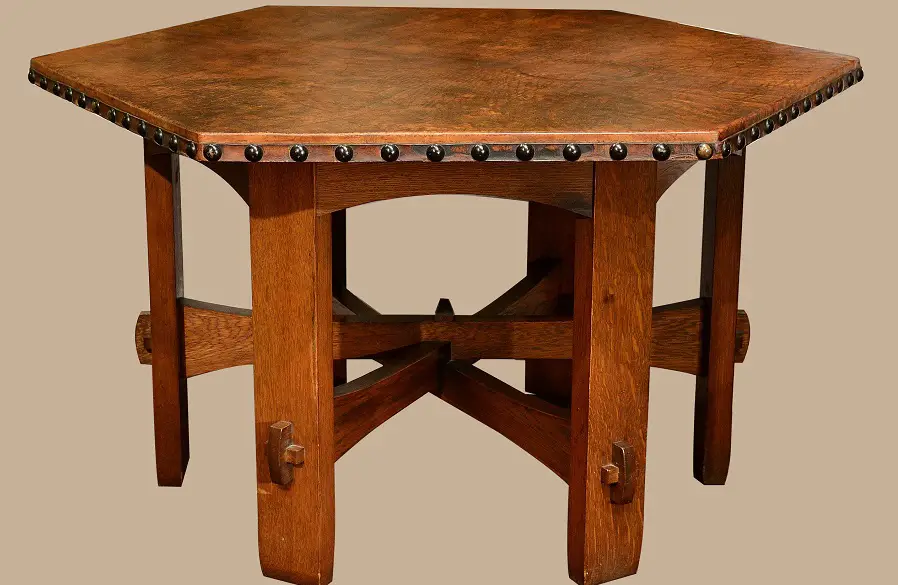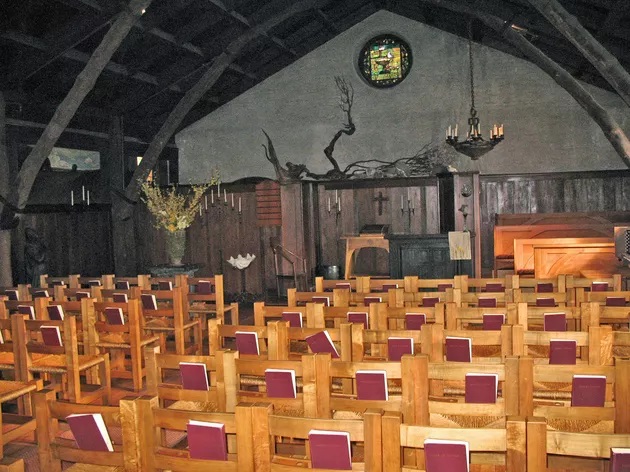In the 19th century, dominated by the industrial revolution, factories replaced craftsmen and small workshops as products became cheaper and more accessible. But this 'inflation' of products also came with the displeasure of those who saw them as poorly made and lacking personality. And so, around 1860, the Arts and Crafts (Arts and Crafts), a philosophical way of looking at the production of goods that emphasized unique design and handmade or partly handmade production in workshops. The movement spanned the fields of fine and decorative arts, architecture, jewelry and had a major impact on furniture.

A replica of table furniture
One of the reformers behind the style was William Morris, a British artist and writer who lived from 1834-1896. He wanted to revive the spirit of the old guilds, to revive the quality and craftsmanship of products, and to surround people with beautiful and well-made things. William Morris began to lecture and write essays on art and the rediscovery of traditional techniques and crafts. He and his followers helped spread the movement, and through his company Morris, Marshall, Faulkner & Co. began to create and spread original designs.
The basic characteristics of the Arts and Crafts movement are craftsmanship that emphasizes the beauty of the material, nature as inspiration, utility, value and the beauty of simplicity. Utility and simplicity came in response to Victorian style, a highly decorative and precious industrial style. The movement promoted reform in art and advanced the idea of the craftsman as product designer. The emphasis was not on particular features but on a return to one-off and small-series production, craftsmanship and artistry.
From England, where it dominated the second half of the 19th century, peaking between 1880 and 1910, the movement spread to the USA and other countries. In each of these countries, the style was personalized by adopting local traditions, techniques and customs. But whatever the influences, the style remained simple and natural, centered on craftsmanship and utility.

Main features of Arts and Crafts furniture
In general, furniture in the Arts and Crafts style has straight lines, emphasizing vertical and elongated shapes. Recognizable Gothic influences and the craftsmanship of medieval guilds. It's usually made of solid stained wood, especially stained oak, with simple metal fittings and simple shaped locks. Armchairs and sofas are upholstered in simple, sober leather or fabric in natural colors. Gone are the overstuffed upholstery and the specific shiny buttons Victorian style and very rich floral prints.
Despite the many influences and the lack of a very clear line in terms of how objects are made, Arts and Crafts style furniture has some defining characteristics:
- Robust design and hand-crafted using ancient artisan techniques.
- Straight shapes and lines, simple and simple design.
- No frills - simplicity and utility are the key words of the style.
- Robust stained wood - oak is widely used, and the color is there to emphasize the craftsmanship of the designer.
- Joints such as cep and burr handmade. Nails and adhesives are missing.
- Natural leather or canvas upholstery in neutral or earthy colors. No flowers, bright colors, puffy upholstery or gold or silver studs.

Arts and Crafts, Craftsman and Mission styles
All three names refer to the same style. They appeared around the same time and focused on simplicity, utility and handmade. However, there is a difference: the Arts and Crafts style focuses on original design and handmade, the Mission sticks to the original design, but the making is done in the factory, making them mass-produced.
The Arts and Crafts movement arrived in the early 20th century in the USA, where it took the name Craftsman style. A promoter of the style was Gustav Stickley who, from 1901, published The Craftsman magazine, which included writings and photographs illustrating the style, as well as urging that it be adopted by other furniture makers. Stickley was a major supporter of the movement, producing countless pieces of furniture in the Arts and Crafts style.
Name of Mission style came about in the 1890s when Joseph McHugh, a New York furniture maker, made chairs inspired by Arts and Crafts-style chairs he found in the Swedenborgian church in San Francisco. The chairs were marketed as Mission-style chairs - that is, chairs from Spanish missions in California. The furnishings, however, were no different from Arts and Crafts.

The Art and Crafts style is more an idea, a concept, than a style of furniture with distinctive characteristics. It is a movement against mass production and the standardization of taste, in favor of craftsmanship, simple beauty and utility.






























Add comment